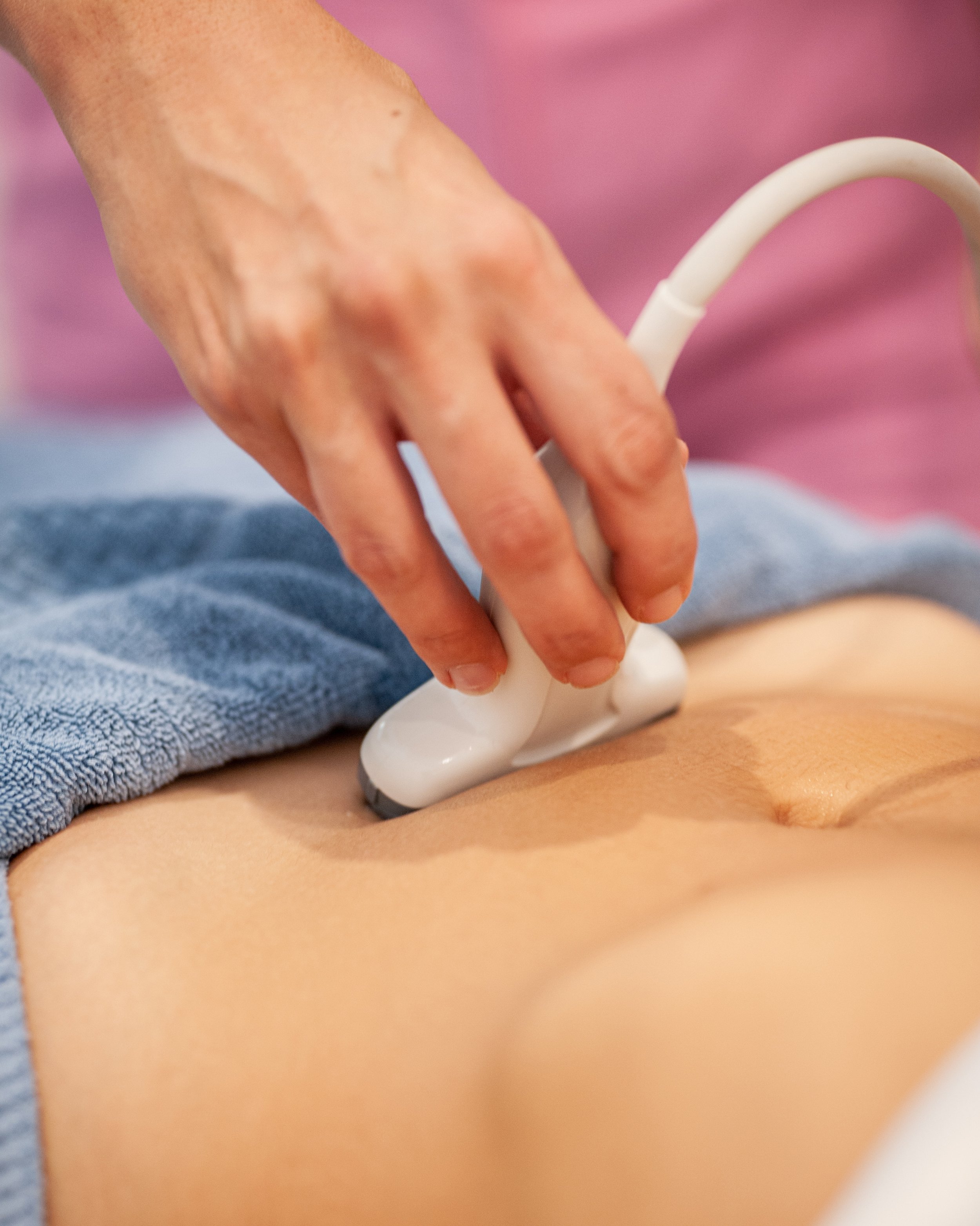DIASTASIS RECTI
Diastasis recti or abdominal separation, commonly referred to as ‘mummy tummy’ is an issues that concerns many women post pregnancy.
What is Diastasis Recti?
Diastasis recti occurs when the linea alba (a line of connective tissue that connects your abdominal muscles, aka your six pack) thins and stretches, forming what feels like, a gap in your stomach. This gap is considered to be a diastasis recti if it is greater than 2 fingers in width.
If you are concerned that you may have a diastasis recti please feel free to give us a call to chat with one of our friendly osteopaths.
Abdominal separation is most commonly found in pregnancy; women are more vulnerable during this time due to the release of the hormone relaxin. Relaxin allows your ligaments and tissue to stretch more easily enabling your body to accommodate your growing baby. For some women, this condition may also arise during the intense straining associated with labour.
Although it is most commonly seen it pregnant and postnatal women, diastasis recti is also seen in overweight people (both male and female), premature babies and people who regularly lift heavy weights.
Core connection and diastasis recti
The pelvic floor muscles, deep abdominal muscles (tummy), back muscles and the diaphragm (breathing muscle) make up one’s core; together they support the spine and control the pressure inside the abdomen.
The internal pressure within the abdomen varies during different activities. Some activities give rise to an increased internal abdominal pressure, such as, when lifting a weight, coughing, sneezing, or simply getting out of bed. However, when the weight is put down, we finish coughing or sneezing – the internal pressure returns to normal.
In an ideal situation the regulation of pressure within the abdomen happens automatically. If any of the muscles of the ‘core’ are weakened or damaged, either caused by biomechanical restrictions through the pelvis or spine and ribs, an imbalance in the whole body alignment or a neurological/nervous system issue, this coordinated automatic action may be delayed or absent.
If your intra abdominal pressure is not properly contained, the pressure can travel down, to strain your pelvic floor or out, affecting the abdominal wall.
How can I reduce the risk of diastasis recti?
Breathe – ensure you have a relaxed diaphragmatic breath
Strengthen your pelvic floor and deep abdominal muscles
Engage your pelvic floor and deep abdominals on an exhalation when lifting
Roll onto your side and use your hands to push yourself up when you are getting off the floor or out of bed.
Posture, posture, posture – think about your posture while walking, sitting, standing and especially when lifting or exercising.
Things to avoid?
Crunches
Planks
Avoid or modify any activities that increase your intra-abdominal pressure.
Closing the gap?
Recent research suggests that a ‘closed gap’ does not necessarily signify a healed diastasis rectus, it is far more important to be functionally proficient.
Your osteopath will examination your diastasis recti to identify whether or not you are able to generate tension across the linea alba (functional DR). If you are unable to generate tension across your linea alba, we will aim to not only work out the cause of your inability to generate tension, but also why the DR occurred in the first place. Finding the root cause of why the pressure in your abdomen was not contained and why it put stress on your linea alba.
We will look at your body as a whole to identify any areas in your body (joints, ligaments, fascia and muscles), movement patterns, dysfunctional postural or breathing patterns that may have impacted on your ability to control intra-abdominal pressure in the first place.
In most cases, an appropriate exercise program will be given to support your treatment outcomes. Generally these programs will be aimed at correcting breathing dysfunction and strengthening your pelvic floor and transverse abdominal muscles.
For some women, surgery may be indicated if conservative treatment (manual therapy and an exercise program) does not regain functionality.
Diastasis Recti Treatment Melbourne
At Eastern Osteopathy Melbourne, we are experienced treating patients with Diastasis Recti. Dr Mia Di Ciccio and Dr. Kathryn Johns have completed further training in treating and managing Diastasis Recti. Our osteopaths take a holistic approach to managing Diastasis Recti, using a combination of manual treatment, exercises and breathing techniques to support patients in meeting their treatment outcomes and goals.




